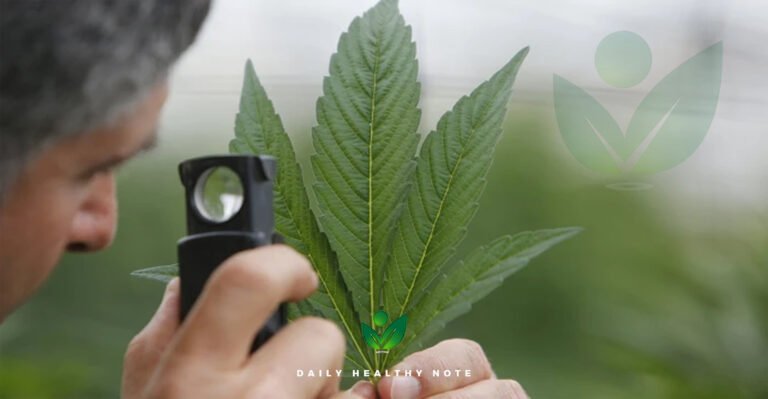
Woman Rids Body of Cancer in 4 Months Using Cannabis Oil
Medical doctors and healthcare personnel alike are stymied by the miraculous cure which recently occurred to Michelle Aldrich who suffered from a deadly form of lung cancer.
Michelle was sixty-six years old at the time. Initially she developed a low-grade fever and cough which she couldn’t shake. Several months later it worsened; she developed signs of a pneumonia which prompted her to seek medical care. Her doctor ordered a CT scan trying to determine what the problem was. The scan revealed a large mass in the central region of the chest consistent with lung cancer.
NON-SMALL CELL LUNG CANCER (NSCLC)
Unfortunately the biopsy and staging of the tumor revealed it to be poorly differentiated, non-small cell lung cancer (adenocarcinoma) or NSCLC for short, stage three. All lung cancers carry a poor prognosis but this form is particularly aggressive. From the National Cancer Institute:
General Information About Non-Small Cell Lung Cancer (NSCLC)
NSCLC is any type of epithelial lung cancer other than small cell lung cancer (SCLC). The most common types of NSCLC are squamous cell carcinoma, large cell carcinoma, and adenocarcinoma, but there are several other types that occur less frequently, and all types can occur in unusual histologic variants. Although NSCLCs are associated with cigarette smoke, adenocarcinomas may be found in patients who have never smoked. As a class, NSCLCs are relatively insensitive to chemotherapy and radiation therapy compared with SCLC. Patients with resectable disease may be cured by surgery or surgery followed by chemotherapy. Local control can be achieved with radiation therapy in a large number of patients with unresectable disease, but cure is seen only in a small number of patients. Patients with locally advanced unresectable disease may achieve long-term survival with radiation therapy combined with chemotherapy. Patients with advanced metastatic disease may achieve improved survival and palliation of symptoms with chemotherapy, targeted agents, and other supportive measures.
Incidence and Mortality
Estimated new cases and deaths from lung cancer (NSCLC and SCLC combined) in the United States in 2015 1:
• New cases: 221,200.
• Deaths: 158,040.
Lung cancer is the leading cause of cancer-related mortality in the United States. 2 The 5-year relative survival rate from 1995 to 2001 for patients with lung cancer was 15.7%. The 5-year relative survival rate varies markedly depending on the stage at diagnosis, from 49% to 16% to 2% for patients with local, regional, and distant-stage disease, respectively. 3
Michelle was classified with having stage three or T3, involving a number of regional lymph nodes in the chest. A T4 staging means distant nodes were found to be positive for tumor metastasis. Five-year survival vastly decreases from T3 to T4.
Surgically resectable disease is generally stage I, stage II and selected stage III tumors. Generally T3 and T4 use combination modalities since surgery cannot be used solo for cure. One must also use chemotherapy and or radiation.
But let’s face it, survival for this type of cancer hasn’t improved since the war on cancer began in the seventies as Dr Abramson reminds us. In his pivotal book “Overdosed America,” he explains that the age-adjusted death rate for all cancers has actually increased since the “war” began. Put simply: you are no better off today with most cancers than you were 45 years ago. Unless you have the courage to venture outside the conventional medical “box.”
ASTONISHING CURE IN LESS THAN FOUR MONTHS
At best using conventional medicine Michelle had an approximately 49% five year survival and that’s with only local tumor involvement. It drops quickly as you can see from above down to 2% five year survival with distant stage disease.
“I thought I was going to die,” Aldrich says from her Marina District apartment. But she didn’t. And now, she is busy telling anyone who will listen that, along with diet and chemotherapy, a concoction of highly concentrated cannabis oil eliminated her cancer in less than four months. 4
Initially diagnosed in January of 2012 and by April 2013 a repeat CT scan showed a reduction in tumor size by 50%. What tumor remained was surgically removed. Repeat CT scan showed no tumor involvement anywhere in the chest.
Her doctors — one of whom noted the effect of “homeopathic treatments, including hemp oil” to reprogram the cancer cells to kill themselves — “are floored,” she says. “They’ve never seen anything like it.” 5
CONFUSED?
See how confusing the nomenclature is? To clarify, Michelle did not use “hemp oil” she used cannabis oil which is completely different. Specifically she used Rick Simpson Oil (RSO), AKA Phoenix Tears. It is also not homeopathic in any sense of the word. RSO is allopathic all the way; it acts much like a powerful drug, as powerful as any pharmaceutical. In fact, it appears to be much more effective than any chemotherapeutic currently on the formulary.
Using “hemp oil” which is the essential oil extracted from industrial hemp, to treat ANY disease is a fool’s errand. Only authentic cannabis oil can cure cancers. Please be aware of that fact. Industrial hemp is good for food-grade seeds, its bright green oil can be used in salads. It’s also good for textiles and paper but when you want to cure disease you need the big guns that real cannabis employs.
MEET CONSTANCE FINLEY
In the East Bay area of San Francisco where I had my medical practice lives a woman who is very well known to the cancer community. She is a very busy person. While the webpages of the NCI claim that there is no evidence that cannabis cures cancers, we have plenty of real-time and anecdotal case reports of numerous cures of “incurable” late stage, highly aggressive tumors. Some of those reports come from Constance Finley.
Employing the same manufacturing techniques seen on Rick Simpson’s website, she takes a pound of cannabis and reduces it into one ounce of pure medical magic.
This cannabis reduction sauce (essential oil) in its thickened final stage is called Rick Simpson Oil (RSO).
Most oncologists would guffaw over the idea that the sap of a common weed could defy the realm of possibility and outperform the best that Big Pharma can deliver. But it can and it does. The internet is overflowing with anecdotal cures of virtually any cancer regardless of cell type. Doctors and laypersons alike would never believe it was possible were it were not for the scores of bona fide, documented, cases seen by this woman and many others.
She was quoted as saying that there is a world-class oncologist in San Francisco who has already referred 26 “deaths door” patients to her in 2013. All 26 of Finley’s referrals had stage 4 cancers. The patient population included brain tumors, colon cancers, and lung cancers to name a few. Stage four is a death sentence since it means the malignant cells had escaped the primary tumor and metastasized to other organs. Most had only a few months to live, some had less than six weeks. All patients received modern medical treatments such as chemotherapy with the concentrated oil. She reportedly has “cured” all but one of them. That’s a 96% cure rate, the best in the business if it’s true. And it’s not just in San Francisco.
These survival stories are becoming more common. One of the most high-profile was the case of Montana toddler Cash Hyde, diagnosed with a brain tumor at 20 months, whose family credits cannabis oil for keeping the tumor at bay and keeping him alive — until a change in Montana state law cut off his access to oil for a few months. The tumor returned and he died in November, at age four. 6
A LOW PROFILE
Understandably this San Francisco oncologist prefers to keep his name private when being quoted. Even when a powerful remedy like this mops up cancer cells like a Pickwickian tween in a pie-eating contest, academics still prefer to remain hidden lest they succumb to the predictable harassment and ridicule of their peers. Some could easily lose their jobs should they become overzealous reporting the truth that a simple plant extract outperforms the best chemo by an unbelievably wide margin.
One question. When will these oncologists start referring patients to Finley before the system nearly kills them? Imagine how helpful it could be then.
WIDE SAFETY MARGIN
Remember also that RSO is NON-TOXIC. There is no devastating blowback from using it. Contrast this to your typical chemotherapy course which causes blood cancers years later in up to 15% of patients who received chemo at some point earlier in their disease course. Furthermore, chemotherapy is an efficient immune system destroyer. Just what you don’t need when fighting for your life.
Meanwhile, by definition late stage cancer is incurable and always leads to 100% mortality. This makes RSO even more astonishing. That’s because these people are written off by modern medicine as failures where nothing could help them. Sick, emaciated from chemo and radiation, cachectic and nearly dead she revives them like a modern day Lazarus factory.
Take a moment to reflect on this humble fact. It reveals to us the absolute beauty of this incredible, health-regenerating, symphony of phytocannabinoids. A true gift from God.
If it’s all true. And that’s a big if. We need controlled studies now more than ever before. But don’t hold your breath. Clinical trials are ten years away, minimum.
EASY AS BOILING WATER
To make this unpretentious oil is actually very easy. Simply go to Rick Simpson’s website for instructions. The most important of all is that you use a safe solvent for extraction. Aldrich’s providers use Everclear in making what they call “Milagro oil” which is the same as RSO, at Wo/Men’s Alliance for Medical Marijuana in Santa Cruz, CA. Finley’s operation uses isopropyl alcohol which can be toxic in large doses. Theoretically you will boil off all of the isopropyl alcohol but personally I think it’s far better to use ethanol the only truly safe alcohol (in small doses).
Once they have procured the precious oil patients with end-stage disease need to ramp up to an anti-cancer blood level as soon as humanly possible. But the material is extremely potent: a concentrated extract clocking in at around 70% active THC or higher. The oil is a reduction using heat so all of the acidiccannabinoids are converted to psychoactive decarboxylated forms of which THC is a major component.
THE ENTOURAGE EFFECT
But it’s not just the THC that they need. All of the 60 phytocannabinoids, decarboxylated and ingested along with the terpenes, and thousands of other mysterious chemicals found in the oil, produce the “entourage effect.” Scientists have speculated that this synergy is the real reason why RSO is so strangely effective. You need whole plant extracts of real cannabis to knock cancer cells into next week. The potent psychoactivity is the biggest hurdle to overcome.
That’s why patients need to start out with a dose that will not pound them into submission the first day which may discourage its use. Practitioners who use the drug regularly recommend starting out with a small rice grain sample of the sticky oil, rub it inside your mouth along the gum line. After that you simply swallow it. From there you quickly work your way up to dosing four times a day or more. For those familiar with the high of cannabis they can accelerate the dosing very quickly if they like the way they feel. You’ll be doing a lot of sleeping since the preparation normally comes from an indica only species. No sativas are used since the preparation becomes too speedy for most patients especially at high dosages. Sleep induces healing. It’s all part of the process: eat, sleep, relax, protect, and don’t forget…forget.
With perseverance one can increase the dose rapidly to full-strength in one week. You’ll want to increase the dosing of a “rice grain” to four time a day or more to achieve a total of one gram per day. So each dose is about ¼ gram. At that point blood levels are high, we start to see the magical entourage effect take place. Tumors shrink and finally disappear to be replaced with healthy cells.
HOW MUCH?
The cost? At a gram per day one needs to take it until the cancer is gone which is at least four months. A pound of quality (organic) Indica which is what they prefer to use to help you sleep and heal, runs about $2,500 to $3,000 in the Bay Area. Aldrich says a three-month regimen costs her $1,200 a month; Finley charges $5,500 for a two-month cycle. 7 That’s pricey but compared to what?
A typical cancer patient caught in the Commercial Sick Care System (CSCS) could buy a (used) Bentley with the money they need for chemotherapy and radiation. In the US they will on average spend eighty thousand dollars toward chemotherapeutics during the last two years of life and often die in spite of “cutting edge” therapy. When viewed this way cannabis oil looks exceedingly cheap and very worthwhile. With the added bonus-you get to live.
The statistics tell us either you pay eighty thousand over two years for the right to die in pain, anguish, and loss of dignity; or you shell out eleven thousand on RSO and possibly receive a new lease on life. I don’t know that’s a tough choice.
Furthermore, patients with NSCLC who have survived their ordeal often develop secondary lung cancers years later as a matter of course.
Not so with RSO. Taking a lower maintenance dose of RSO after the tumors disappear is highly recommended since it will help prevent the ignoble recurrence of tumors.
Original Article: medicalmarijuana.co.uk
Post Views: 391









